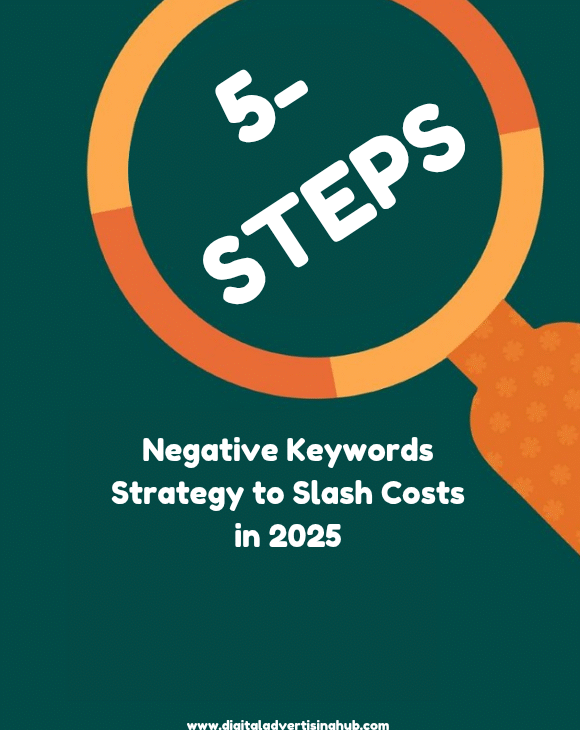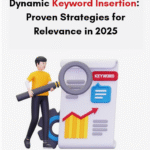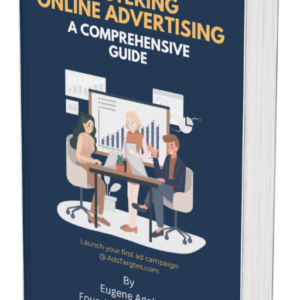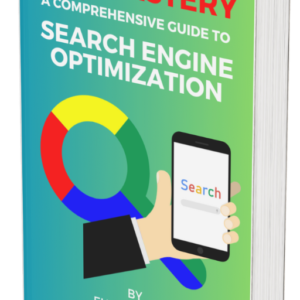In 2025, rising CPCs and tighter marketing budgets mean advertisers can’t afford to waste money on irrelevant clicks.
A negative keywords strategy is one of the most effective ways to cut that waste while improving campaign efficiency.
By excluding search terms that attract low-intent traffic, you ensure ads reach only the audiences most likely to convert.
This leads to higher click-through rates, better Quality Scores, and stronger return on ad spend. Yet many campaigns still overlook the ongoing management required to keep negatives relevant.
So, read on to learn how to build, structure, and optimize a negative keywords strategy that works across search, Shopping, and Smart Bidding campaigns—so every click brings you closer to profitable growth.
Why a Negative Keywords Strategy Matters in 2025
The competitive landscape for paid advertising in 2025 is more intense than ever.
CPC rates continue to climb in most industries, according to Statista, making cost control a top priority for advertisers.
A negative keywords strategy plays a vital role in reducing wasted spend by preventing ads from appearing for irrelevant search queries.
In Google Ads, this means filtering out terms that attract clicks from users unlikely to convert.
The results are measurable: higher click-through rates, improved Quality Scores, and lower cost per acquisition.
WordStream reports that poorly targeted campaigns can lose over 70% of their budget to unqualified clicks—losses that a robust negative keywords strategy can prevent.
The benefits extend beyond cost savings.
By removing low-intent traffic, you give Google’s algorithm cleaner data to optimize bidding, improving campaign performance over time.
With a disciplined negative keywords strategy, your ads consistently reach the right audience, and your budget works harder.
In an environment where marketing leaders demand ROI proof before expanding budgets, this discipline is no longer optional—it’s essential to survival.
Building Your Initial Negative Keywords List
A solid negative keywords strategy starts with a clean foundation: your initial exclusion list. This list determines which irrelevant queries never get the chance to drain your budget.
The most efficient way to build it is through your Google Ads search terms report. Pull recent data, identify queries with high spend but no conversions, and mark them for exclusion.
For example, if you run a luxury hotel, terms like “cheap hostel” or “budget motel” have minimal conversion potential.
Adding these to your negative keywords list ensures you don’t compete in auctions that won’t deliver ROI.
Industry experts suggest building an initial list of 50–100 negative terms before launching a campaign.
This proactive step can immediately reduce wasted clicks. Tools like SEMrush, Ahrefs, and Google Keyword Planner help identify potential negatives before your ads even run.
Your initial negative keywords strategy should be comprehensive yet flexible. Over time, you’ll refine it by adding seasonal or campaign-specific negatives.
This prevents the common mistake of relying solely on post-launch adjustments, which can lead to budget loss in the early weeks of a campaign.
Structuring Campaign-Level vs. Ad Group-Level Negatives
In a refined negative keywords strategy, exclusions are not applied randomly—they are structured for maximum efficiency.
Campaign-level negatives prevent irrelevant queries from triggering any ads in the campaign, while ad group-level negatives filter queries for specific ad groups.
For example, if you manage separate campaigns for “men’s running shoes” and “women’s running shoes,” you can use “women” as a campaign-level negative in the men’s campaign and “men” as a campaign-level negative in the women’s campaign.
At the ad group level, you might exclude specific styles or colors irrelevant to that product set.
This structure not only reduces wasted spend but also prevents keyword cannibalization—where your own ads compete against each other.
Google confirms that well-organized negatives improve Quality Score by ensuring higher ad relevance.
A layered negative keywords strategy allows you to control traffic flow precisely.
Campaign-level negatives handle universal filters, while ad group-level negatives maintain tight thematic relevance.
This prevents budget leakage while ensuring that the highest-converting ad groups receive the most qualified clicks.
Ongoing Optimization of Your Negative Keywords Strategy
A negative keywords strategy is only effective if it evolves with changing search behavior.
Industry data from Optmyzr indicates that advertisers who review their search term reports twice a month can reduce wasted spend by up to 30%.
Reviewing performance data helps identify new irrelevant terms triggered by seasonal changes, emerging trends, or competitor activity.
For example, a sudden spike in irrelevant queries due to a trending news event could waste significant budget if not addressed promptly.
Automation can speed up the process. Scripts, automated rules, and third-party PPC platforms can flag poor-performing search terms.
However, automation should complement—not replace—manual review to avoid mistakenly excluding terms that could be valuable with different ad copy.
Your negative keywords strategy should also account for historical performance thresholds.
For instance, you might exclude any term with over 50 clicks and zero conversions over a 90-day period.
This approach ensures data-backed decisions, reducing emotional bias in optimization.
Aligning Negative Keywords with Match Types
A negative keywords strategy gains precision when you use the correct match types. Google offers three options:
#1. Broad match negatives block any search containing all negative keyword terms, in any order.
#2. Phrase match negatives block searches containing the exact phrase, in the same order, even if other words appear before or after.
#3. Exact match negatives block searches that match the exact keyword phrase without additional words.
Using the wrong match type can either over-block relevant traffic or under-block irrelevant clicks.
For example, excluding “free software” as a broad match could block valuable searches like “software with free trial,” which may still convert. A phrase match would be more precise in this case.
Google’s keyword match type guide recommends testing match types to maintain balance between reach and precision.
A layered approach—using different match types for different contexts—can maximize control without harming traffic volume.
When implemented correctly, match type alignment ensures your negative keywords strategy works as intended, filtering only the traffic you genuinely want to avoid.
Using Search Intent Data to Expand Your Negative List
Integrating search intent analysis into your negative keywords strategy allows you to identify low-value traffic before it impacts your budget.
Classifying queries as informational, navigational, or transactional provides a framework for deciding which to exclude.
For example, if your campaign targets ready-to-buy customers, informational queries like “history of CRM software” should be excluded.
This ensures your ads are shown primarily to high-intent searchers.
Tools like AnswerThePublic and Google Trends help detect emerging topics that may trigger irrelevant traffic.
By proactively excluding these, you prevent wasted spend and preserve budget for high-ROI searches.
Hanapin Marketing’s PPC study found that intent-based negatives can increase ROAS by up to 25% in under 60 days.
This demonstrates how a negative keywords strategy can directly impact profitability.
Competitor Analysis for Smarter Negative Keywords
Competitor research can uncover valuable insights for your negative keywords strategy.
Tools like SEMrush and SpyFu allow you to see the keywords competitors are targeting.
If these include irrelevant or low-quality terms, you can exclude them from your own campaigns.
For example, if a competitor is targeting very broad queries like “business software,” but you offer a niche SaaS product, excluding that term ensures you only attract qualified leads.
This tactic reduces the chance of wasting budget on traffic that competitors are already failing to convert.
Over time, competitor-informed negatives help refine your keyword portfolio and make your targeting more efficient.
Monitoring Shopping Campaign Negatives
Google Shopping campaigns match ads to search queries based on product feed data, not manual keywords.
This makes negative keywords your primary tool for filtering irrelevant impressions.
Regularly reviewing your Shopping search term report allows you to spot irrelevant queries—such as unrelated product types, “cheap,” or “free”—that may be consuming budget.
Adding these to your negative keywords list prevents low-value clicks.
Tinuiti reports that advertisers using strong Shopping negatives see ROAS improvements of 20–30%.
In 2025, with competition for Shopping ad space at record highs, this extra layer of filtering can be the difference between profitable and unprofitable campaigns.
Integrating Negatives into Smart Bidding Strategies
A negative keywords strategy plays a direct role in the success of automated bidding systems like Google’s Smart Bidding.
These algorithms rely heavily on historical click and conversion data to predict the likelihood of future sales and adjust bids accordingly.
If irrelevant clicks are allowed to enter the dataset, the system may misinterpret those signals, leading to inflated bids for low-quality traffic.
By removing unqualified queries through a disciplined negative keywords strategy, you supply Smart Bidding with cleaner, more accurate performance data.
This allows the algorithm to optimize bids in a way that prioritizes high-intent searches and maximizes return on ad spend.
For instance, excluding terms like “free trial” in a paid-only service campaign can prevent budget drain on clicks that are unlikely to convert.
Integrating negatives into Smart Bidding workflows also ensures faster learning phases, as the algorithm spends less time testing irrelevant segments.
Advertisers can further refine performance by regularly reviewing search term reports and updating exclusions in line with real-world conversion trends.
This feedback loop between your negative keywords strategy and Smart Bidding not only preserves budget but enhances bidding accuracy over time, delivering better efficiency at scale.
Auditing Shared Negative Keyword Lists Across Accounts
For advertisers managing multiple Google Ads accounts or operating under a manager account (MCC), a shared negative keywords list is a powerful tool for maintaining consistency across campaigns.
This centralizes exclusions, ensuring your negative keywords strategy is applied uniformly to all relevant campaigns or brands without the need for repetitive manual entry.
Google Ads supports creating and linking shared negative keyword lists to multiple campaigns.
This allows advertisers to instantly roll out updates—such as adding a newly discovered irrelevant term—to every connected campaign at once.
For agencies or enterprises with similar audience targeting criteria, this prevents mismatched targeting and wasted spend across accounts.
Regular auditing is essential to keep these lists relevant.
Over time, some exclusions may become outdated or unnecessarily restrictive, potentially blocking valuable traffic.
A quarterly review process helps strike the right balance, removing obsolete terms while adding new low-value keywords identified from search term reports.
An effective negative keywords strategy applied at scale through shared lists saves significant management time, reduces inconsistencies, and ensures that performance data remains accurate across all accounts.
This approach is especially valuable for large advertisers where budget efficiency and operational consistency are equally critical.
Tracking ROI Improvements from Negative Keyword Changes
Measuring the business impact of your negative keywords strategy is essential for justifying its ongoing use and refinement.
Start by benchmarking key metrics—cost per click (CPC), click-through rate (CTR), cost per acquisition (CPA), and return on ad spend (ROAS)—before implementing new negatives.
Once updates are made, monitor performance for 30–90 days to identify changes directly tied to those exclusions.
Google Ads’ change history tool is particularly useful here. It allows you to correlate performance fluctuations with specific updates to your negative keyword list.
For example, if you exclude a cluster of informational search terms and see a subsequent 15% improvement in conversion rate, you can attribute that gain to your refined targeting.
Advertisers who regularly track these before-and-after metrics report more consistent ROI improvements, as they can quickly identify which updates deliver the highest value.
This data-driven approach also provides tangible evidence for stakeholders or clients, proving that your negative keywords strategy is directly contributing to better budget utilization and profitability.
By making ROI tracking a core part of your workflow, you ensure that exclusions remain performance-driven rather than arbitrary, and your campaigns continually evolve toward maximum efficiency.
Conclusion
A comprehensive negative keywords strategy is an essential cost-control measure for advertisers in 2025.
From building an initial list to structuring exclusions by campaign and ad group, aligning match types, integrating search intent, leveraging competitor insights, and maintaining Shopping campaign filters—every step contributes to higher efficiency.
Ongoing review and adaptation keep the strategy relevant in changing markets.
Integrating negatives into Smart Bidding, auditing shared lists, and tracking ROI improvements ensures your approach remains data-driven.
In an era where budgets face constant scrutiny, a disciplined negative keywords strategy not only saves money but improves campaign performance across the board.
The advertisers who invest in this process now will see compounding gains in cost efficiency, click quality, and return on ad spend.










